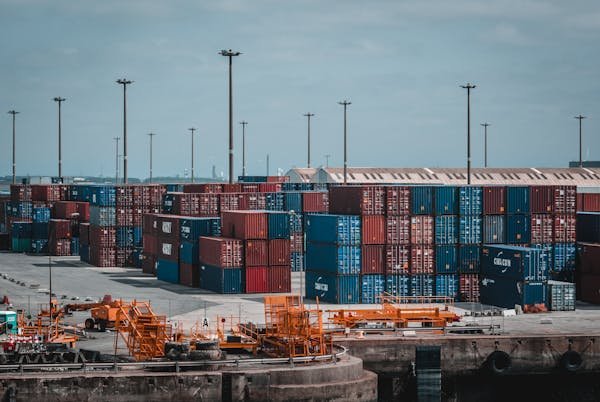The world of global manufacturing and services is changing fast. For years, offshoring was the go-to strategy for companies looking to cut costs. But times have changed. More and more businesses are now looking closer to home. This shift toward nearshoring is driven by data, not just gut feelings. In this guide, we’ll walk through 30 powerful stats that explain why preferences are changing, and what it means for your business.
1. 83% of North American manufacturers are likely to nearshore some or all production by 2030
The manufacturing landscape is heading toward a major transformation. As businesses evaluate the risks and benefits of different sourcing strategies, nearshoring is quickly becoming the default for many North American companies. Why?
First, think about the lessons learned during the pandemic. Disruptions, shipping delays, and supply chain chaos made many companies rethink their global strategies. When surveyed, 83% of North American manufacturers said they’re likely to nearshore some or all production by 2030. That’s not a small trend—it’s a major movement.
But what’s driving this change?
It’s not just about bringing jobs back home for the sake of patriotism. This is about smart business. Nearshoring means shorter delivery times, better quality control, more predictable supply chains, and often, lower total costs once you factor in shipping and delays.
Businesses want to be more resilient. They want faster access to their goods. They want suppliers they can visit within a few hours. And most importantly, they want to control their supply chains without being at the mercy of foreign ports or global crises.
So, if you’re running a manufacturing business in North America, it’s time to start mapping out what your supply chain looks like in five years. Ask yourself:
- What percentage of your parts or materials come from overseas?
- Which components can be made closer to home?
- Are there suppliers in Mexico or Canada that can fill the gap?
The future is regional. And the clock is ticking.
2. The average total cost savings of nearshoring is 15–25% compared to offshoring in Asia
One common misconception is that offshoring is always cheaper. But when you look beyond the surface, nearshoring can actually be more cost-effective. Let’s break it down.
Yes, wages might be lower in parts of Asia. But cost isn’t just about wages. It’s about the full picture—logistics, customs, compliance, risk, and delays. When companies calculate the total landed cost, nearshoring often ends up 15–25% cheaper.
How?
First, shipping from Asia can take weeks. With fuel costs rising and global congestion increasing, those shipping prices are adding up fast. Plus, there are tariffs and compliance costs to deal with.
Second, there’s the hidden cost of time. Delays in parts can stall production lines and cost millions in missed deadlines. Nearshoring reduces that risk. When your supplier is nearby, you can get goods faster and solve problems quicker.
Third, nearshoring simplifies your communication. Working in similar time zones and cultural contexts saves time and money on misunderstandings and management overhead.
So, how can your company tap into these savings?
Start by re-evaluating your current cost structure. Calculate your true landed cost from Asia and compare it to nearby alternatives. Then, talk to nearshore vendors. Many will be eager to work with North American companies and may offer competitive pricing that’s more stable long-term.
3. Nearshoring reduces average delivery times by 20–50% depending on region
Speed is everything in today’s market. Whether you’re in retail, electronics, or automotive—getting your product to market quickly is a serious advantage. And that’s where nearshoring shines.
Nearshoring can cut delivery times by 20–50%. That’s a massive time savings, especially if you’re used to waiting weeks or even months for offshore shipments.
Let’s say you’re manufacturing in China and shipping to the U.S. It could take 30–45 days for goods to arrive. Now imagine if those goods came from Mexico. You’re looking at 3–7 days by truck or rail.
That time advantage can:
- Improve inventory turnover
- Lower warehousing costs
- Allow for more frequent, smaller batches
- Enable faster response to market demand
The faster you get products to market, the more competitive you are. And in industries where trends change quickly, that’s a game-changer.
To make this shift, analyze your current delivery timelines. Look at lead times from order to delivery. Then research nearshore providers and compare their delivery schedules. You might be surprised at how much you can gain.
4. 60% of U.S. companies report improved supply chain resilience after nearshoring
One of the biggest business buzzwords since 2020 has been resilience. And for good reason. Supply chains cracked under pressure during the pandemic. Ports were jammed. Factories shut down. And companies couldn’t get what they needed, when they needed it.
Nearshoring has become a key solution.
In fact, 60% of U.S. companies that have nearshored some or all of their operations say their supply chain is now more resilient. That’s a major endorsement.
Why is nearshoring more resilient?
- It shortens supply chains.
- It reduces reliance on single countries.
- It makes it easier to pivot when disruptions occur.
- It improves visibility and control.
When your suppliers are close by, you can manage issues in real-time. You can visit factories. You can talk to partners during your working hours. All of this builds flexibility into your system.
If resilience is a priority for your business (and it should be), then nearshoring needs to be part of your strategy. Start by identifying your most vulnerable supply chain links. Then look at nearshoring as a risk management tool—not just a cost decision.
5. 72% of executives cited geopolitical risk as a major factor in shifting from offshoring to nearshoring
The global political environment has grown more unpredictable. From trade wars to sanctions, from lockdowns to embargoes, businesses can’t afford to ignore geopolitical risks anymore.
It’s no surprise that 72% of executives now say geopolitical concerns are pushing them to nearshore operations. Offshoring ties your business to regions you can’t control. And when relations between countries sour, the effects on business can be swift and severe.
For example, escalating tensions between the U.S. and China have led to:
- Rising tariffs on imports
- Export restrictions
- Regulatory uncertainties
- National security scrutiny on tech-related goods
All of this adds cost, complexity, and risk.
Nearshoring helps reduce that risk. You’re dealing with countries that are politically and economically aligned. For North America, that often means Mexico or Canada. For Europe, it might mean Poland or the Czech Republic.
So what’s the action point?
Audit your exposure. What portion of your supply chain is dependent on politically sensitive regions? What’s your backup plan? Start building relationships in more politically stable countries. It’s not just a smart move—it could save your business during the next major disruption.
6. Tariff impacts increased offshoring costs by up to 25% for U.S. firms in 2018–2021
Tariffs are more than a line item on an invoice—they can make or break the cost structure of your entire business model. Between 2018 and 2021, U.S. companies saw their offshoring costs rise by up to 25% because of tariffs.
This wasn’t just theory. Companies importing electronics, steel, textiles, and machinery from China and other nations suddenly found themselves paying much more than expected.
That cost increase wiped out any labor savings they gained from offshoring.
Tariffs are a tool governments use to shift trade flows, but they create uncertainty for business leaders. When you can’t predict what your input costs will be next year, planning becomes guesswork.
Nearshoring often avoids these surprises.
For instance, trade agreements like USMCA (formerly NAFTA) ensure smoother trade between the U.S., Canada, and Mexico. Goods can cross borders with lower or no tariffs, and with fewer bureaucratic hurdles.
So what should you do?
Look at your tariff exposure. Work with trade consultants or legal advisors to understand your risks. Then analyze if nearshoring can give you both cost stability and savings.
7. 48% of European companies are investing in nearshoring hubs within Eastern Europe
Europe is following the same trend. Nearly half of European firms are now investing in nearshoring hubs across Eastern Europe. Countries like Poland, Hungary, and Romania are becoming major beneficiaries of this shift.
Why Eastern Europe?
The answer is simple: proximity, lower labor costs than Western Europe, and growing infrastructure. These countries offer a sweet spot. They’re close enough for just-in-time delivery and far enough to still offer cost savings.
There’s also a cultural and regulatory alignment with the European Union. That means fewer misunderstandings, more compliance support, and easier cross-border movement of goods.
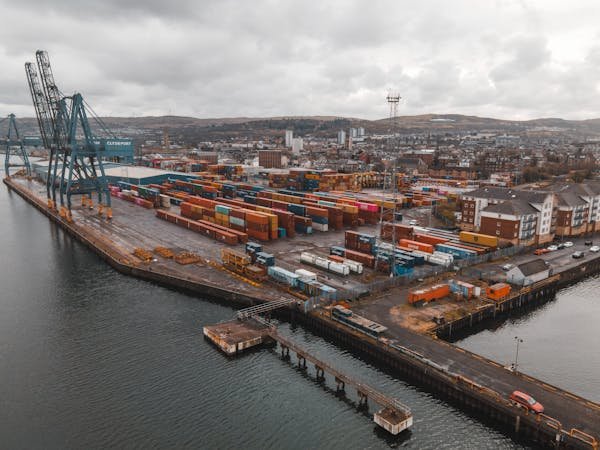
For European businesses, nearshoring within the continent means:
- Shorter delivery cycles
- Shared business hours
- Reduced language and legal barriers
So what can you learn from this trend?
Even if you’re based in North America, it’s worth watching what European companies are doing. Their move toward regional supply chains is a strong validation of the model. If you’re a global business with operations in Europe, look closely at your sourcing strategy there too.
8. Mexico has seen a 40% increase in foreign direct investment (FDI) from U.S. firms since 2020
Mexico is emerging as the star of nearshoring in the Western Hemisphere. Since 2020, foreign direct investment from U.S. companies into Mexico has jumped by 40%.
This isn’t just theory—it’s money on the ground. U.S. firms are building factories, establishing logistics hubs, and forming joint ventures in cities like Monterrey, Guadalajara, and Tijuana.
Why is Mexico so attractive?
- It shares a border with the U.S.
- Labor costs are lower than China in many cases
- There’s a mature industrial base
- Agreements like USMCA simplify trade
- Cultural and time-zone alignment
Many manufacturers are now setting up dual sourcing strategies—maintaining a presence in Asia, but building capacity in Mexico to reduce risk and lead time.
If you’re considering this, start exploring Mexican partners. Visit industrial parks. Talk to other businesses already operating there. There’s a growing support ecosystem for U.S. companies, and early movers are gaining a competitive edge.
9. Labor costs in Southeast Asia have increased by 30–40% over the past decade
Southeast Asia was once seen as the cheapest option for labor. But that’s changing. Over the last ten years, labor costs in countries like Vietnam, Thailand, and Indonesia have risen by 30–40%.
This shift is reshaping the offshoring equation. As wages rise, the labor arbitrage—the difference in pay that makes offshoring attractive—shrinks. At the same time, logistics and compliance costs haven’t decreased. That means the total savings from offshoring are now much smaller than they used to be.
For companies chasing low wages, it’s a moving target. First it was China. Then it was Vietnam. Now, some companies are even exploring Africa.
But there’s another option: don’t chase cheap labor. Focus on total value instead.
Nearshoring may cost slightly more per hour in wages, but the offsetting savings in shipping, lead time, quality, and risk often outweigh that.
Take time to review your cost models. Are you still basing your supply chain on decade-old assumptions? If so, it’s time for a refresh.
10. 76% of surveyed CEOs believe nearshoring will grow faster than offshoring post-2025
The people calling the shots—CEOs—are already planning for a nearshored future. In a recent global survey, 76% said they expect nearshoring to grow faster than offshoring after 2025.
This stat is a peek into the boardroom. Strategic plans are being written with nearshoring in mind. That means investments, talent, and tech are being steered toward closer supply chains.
Why this growing confidence in nearshoring?
Because CEOs are under pressure to deliver:
- Greater agility
- Stronger risk management
- Faster innovation
- Better ESG (Environmental, Social, and Governance) compliance
Nearshoring supports all of these.
And there’s another layer: customer expectations. Today’s customers want fast delivery, transparency, and ethical sourcing. Nearshoring is better positioned to meet these standards.
So if you’re not already thinking about this shift, you’re not just falling behind your competitors—you’re missing where the market is headed.
11. 52% of global manufacturers are actively reshoring or nearshoring operations
This is no longer just talk. Over half of the world’s manufacturers are either bringing operations back home or moving them closer to home. The number—52%—is a clear sign that the strategy is real, and it’s already underway.
Manufacturers today face relentless pressure to be faster, more reliable, and more transparent. In this environment, long-distance offshoring is often a liability. Problems take longer to solve. Delays compound. Accountability becomes blurred.
By contrast, nearshoring—or reshoring altogether—creates more visibility and speed in the system.
Think of the real-world examples:
- A consumer electronics firm moves its assembly from China to Mexico and reduces product launches from 18 months to 12.
- An auto parts supplier shifts production from Southeast Asia to Eastern Europe, cutting customs time and improving quality inspections.
These aren’t isolated wins—they’re patterns.
If you’re not part of the 52% yet, you need to ask why. Is it because of internal resistance? Cost concerns? Vendor availability? Whatever the reason, now’s the time to revisit your strategy.
The rest of the industry is already moving.
12. 90% of delays in offshore production are attributed to logistics or port congestion
Offshoring exposes companies to a major bottleneck—logistics. And here’s a startling fact: 90% of delays in offshore production aren’t caused by manufacturing errors. They’re caused by port congestion, customs issues, and transportation breakdowns.
Think of all the effort you put into finding a reliable overseas supplier, negotiating terms, and planning production schedules. And yet, all that effort can be undone by a backlog at a port thousands of miles away.
That’s what makes nearshoring so powerful. It cuts out the ocean. It removes those high-risk choke points.
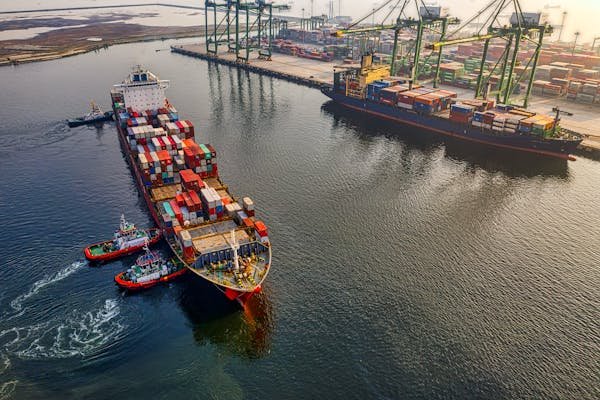
Nearshore logistics usually mean:
- Road or rail transport
- Shorter customs processing
- Fewer third-party freight operators
If your business model relies on timely delivery—and most do—this stat should be a wake-up call. The product being ready doesn’t matter if it’s sitting in a container ship waiting to dock.
13. Nearshoring cuts transportation emissions by 30–70% compared to offshoring
Sustainability isn’t a side issue anymore—it’s front and center. And this stat makes the case loud and clear: Nearshoring can reduce transportation-related emissions by up to 70%.
That’s huge.
With customers, investors, and regulators all watching your ESG metrics, cutting emissions isn’t just good PR—it’s a competitive necessity.
Think about the carbon impact of moving goods from China to the U.S. by sea, then by rail or truck. Now compare that to overland shipping from Mexico or Canada.
The environmental savings are immediate and significant.
If your company has set carbon reduction goals, nearshoring can be one of your most powerful levers. It’s measurable. It’s credible. And it aligns with business logic.
Start by measuring your current transportation emissions. Then model the difference if production was nearshored. You’ll have a strong case to make to leadership, investors, and your customers.
14. 44% of companies nearshoring operations cite IP protection as a key motivator
Intellectual property (IP) is the crown jewel for many companies—especially in industries like tech, pharma, and advanced manufacturing. And nearly half of all businesses moving operations closer to home say IP protection is a major reason.
In offshore settings, especially in countries where enforcement is weaker, protecting trade secrets can be difficult. Knock-offs, reverse engineering, or even unintentional data leaks are risks you face every day.
Nearshoring brings that control back.
With tighter legal systems, stronger contracts, and easier enforcement, nearshoring reduces the chances of IP theft. It also makes auditing and vetting partners easier. You’re working within a legal system that aligns with yours.
If you deal with proprietary processes, sensitive data, or patented tech, this should be at the top of your list. Consider reviewing your current supplier contracts. Are your protections real, or just theoretical? Nearshoring can help you sleep better at night.
15. Offshoring customer satisfaction scores are 20% lower than nearshoring counterparts
You don’t always think about supply chain decisions as customer experience decisions. But they are. And here’s the proof: companies that offshore have customer satisfaction scores that are, on average, 20% lower than those that nearshore.
Why?
Because delivery delays, stockouts, and quality inconsistencies all impact the end customer. They don’t care if the delay was your supplier’s fault. They just want the product when they expected it—and in perfect condition.
Nearshoring gives companies more control over fulfillment and more flexibility to respond to problems. That leads to fewer delays, better communication, and more reliable quality.
If your CSAT scores or NPS have taken a hit, it’s worth looking upstream. The problem might not be your support team—it could be your supply chain.
16. The average time-to-market is reduced by 35% with nearshoring
Getting to market fast can be the difference between leading and lagging. And nearshoring gives you a big leg up here. On average, companies that nearshore reduce their time-to-market by 35%.
In a world where product cycles are getting shorter and competition is intensifying, that kind of speed is a strategic weapon.
Faster time-to-market means:
- Quicker revenue recognition
- Less inventory risk
- Better alignment with customer trends
If you’re in a fast-moving sector—like fashion, tech, or consumer electronics—this stat should really hit home.
Consider how long it currently takes you to go from idea to shelf. Then reimagine that process with local partners, faster iterations, and more agile logistics. Nearshoring could unlock a whole new level of competitiveness.
17. Supply chain disruption costs due to offshore dependence rose by 400% during COVID-19
COVID-19 wasn’t just a health crisis—it was a supply chain catastrophe. And for companies dependent on offshoring, the costs skyrocketed. Disruptions tied to offshore suppliers led to a 400% increase in costs in some sectors.
Those weren’t theoretical losses. These were missed deliveries, spoiled goods, lost contracts, and frustrated customers.
The pandemic exposed just how fragile global supply chains can be. And it accelerated the shift toward regional sourcing.
This stat is a reminder: the true cost of offshoring isn’t just in the spreadsheet. It’s in the risk. When that risk materializes, the losses are enormous.
Nearshoring isn’t immune to disruption—but it’s more resilient. It gives you more ways to respond, faster recovery time, and fewer cross-border complications.
18. 61% of CFOs consider nearshoring essential for long-term risk mitigation
The finance team is not typically the most vocal about where production happens—but that’s changing. Today, 61% of CFOs say that nearshoring is an essential part of their long-term risk mitigation strategy.
This shows that nearshoring isn’t just an operational decision—it’s a financial one.
Why are CFOs paying attention?
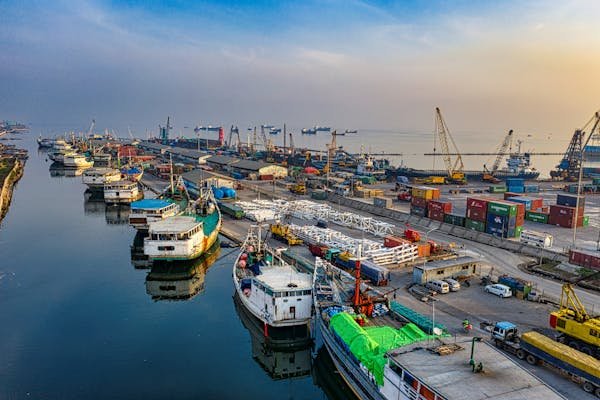
Because they’ve seen the costs of uncertainty. Currency fluctuations. Emergency air freight. Write-offs. Contract penalties. These risks add up.
Nearshoring offers predictability. More stable exchange rates. Shorter payment cycles. Lower emergency costs. And greater supply chain visibility.
If you’re building a business for the long term, financial resilience is key. And nearshoring should be part of that blueprint.
19. China’s share in U.S. imports dropped from 22% to 15% between 2018 and 2023
This stat shows the scale of change in motion. In just five years, China’s share of U.S. imports fell from 22% to 15%. That’s not a blip—that’s a strategic shift in sourcing.
U.S. companies are diversifying. They’re spreading their risk. And they’re finding that reliance on a single offshore source, especially one with geopolitical tension, isn’t sustainable.
Mexico, Vietnam, India, and Canada are picking up that slack. But nearshoring has the added advantage of logistics, trust, and regulatory familiarity.
This stat should encourage you to look at your sourcing map. How much of your current spend is China-based? What’s your contingency plan? It’s time to join the broader shift.
20. Nearshoring boosts regional employment by 8–12% in partner countries
Nearshoring isn’t just good for the sourcing company—it’s a huge win for the destination country too. Data shows that regions receiving nearshored investments see local employment grow by 8–12%.
Why does this matter?
Because choosing nearshoring supports your broader brand story. You’re investing in partners who are close to home. You’re helping communities grow. And increasingly, customers and stakeholders care about that.
Nearshoring lets you align business goals with positive social impact. It also makes it easier to work with regional governments, access grants or incentives, and build long-term loyalty in those markets.
If you’re looking for stable, scalable partners—go where the investment is growing. Those regions will be ready for you.
21. 58% of IT firms prefer nearshore partners due to real-time collaboration
When it comes to IT and software development, collaboration is everything. The ability to communicate in real time, without delays or cultural friction, can make or break a project. That’s why 58% of IT firms now say they prefer nearshore partners over offshore ones.
This shift isn’t just about time zones—though that’s a huge part. It’s about the quality of communication. Real-time feedback loops. Quicker iterations. Fewer misunderstandings. When teams can hop on a quick call, share screens, or meet face-to-face if needed, everything moves faster.
Offshoring often means:
- Waiting overnight for responses
- Misunderstandings due to language or cultural gaps
- Slower decision-making
- Project overruns
Nearshoring gives IT teams more speed and clarity. It’s especially useful in agile environments, where daily stand-ups, sprints, and real-time debugging are part of the workflow.
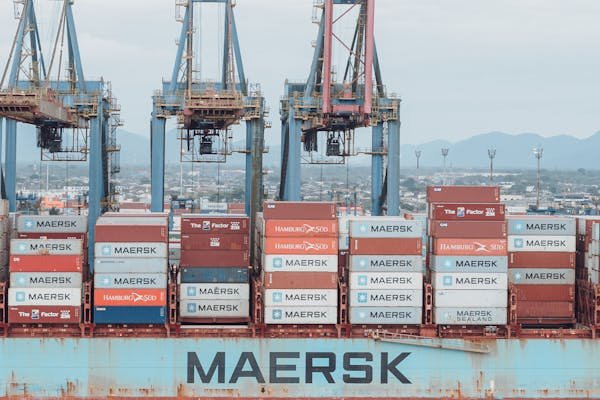
If you’re leading a tech company or managing outsourced development, nearshoring might be the key to better velocity and fewer headaches.
22. Cultural alignment issues are cited in 32% of failed offshore projects
This is one of those issues people often underestimate—until it’s too late. According to research, 32% of failed offshore projects mention cultural misalignment as a core reason.
This includes:
- Misunderstood expectations
- Differing work ethics
- Conflicting communication styles
- Unclear ownership or responsibility
Cultural alignment affects how teams solve problems, give feedback, and deliver work. And when those norms clash, projects stall or go sideways.
Nearshoring, especially to countries with shared or similar business culture, significantly reduces this risk. You’re working with partners who “get” how you do business. There’s often overlap in values, communication norms, and business etiquette.
If you’ve ever had to spend weeks untangling misunderstandings with an offshore vendor, nearshoring might feel like a breath of fresh air. Think of it not just as a logistical advantage, but as an insurance policy against costly project failure.
23. 67% of manufacturers say visibility improves significantly with nearshoring
Transparency in supply chains is no longer optional—it’s essential. Whether for regulatory compliance, risk mitigation, or customer trust, companies need to know what’s happening in every part of their supply chain.
That’s why 67% of manufacturers report better visibility when they shift to nearshoring.
With nearshoring, you’re closer to your partners. You can:
- Visit facilities more often
- Monitor production in real time
- Have face-to-face interactions
- Respond quickly to deviations
Offshoring, by contrast, often means relying on reports, intermediaries, or outdated data. And when things go wrong, they’re harder to diagnose—and even harder to fix.
If your business relies on tight coordination—say, in automotive or electronics—then visibility is money. And nearshoring helps you see clearer and act faster.
24. Quality rework rates are 2.5x higher in offshoring compared to nearshoring
Rework is expensive. Whether it’s fixing a faulty product, revising a service delivery, or correcting errors in code—it eats up time and budget. And here’s a critical stat: offshored operations have 2.5 times more rework than nearshored ones.
Why?
Because longer feedback loops and language barriers mean that errors go unnoticed longer. By the time they’re discovered, they’ve already multiplied.
With nearshoring, you can:
- Catch issues earlier
- Align more closely on specs
- Review progress in shorter cycles
- Train or coach vendors in real time
The result? Higher first-pass yield. Fewer surprises. Lower quality costs.
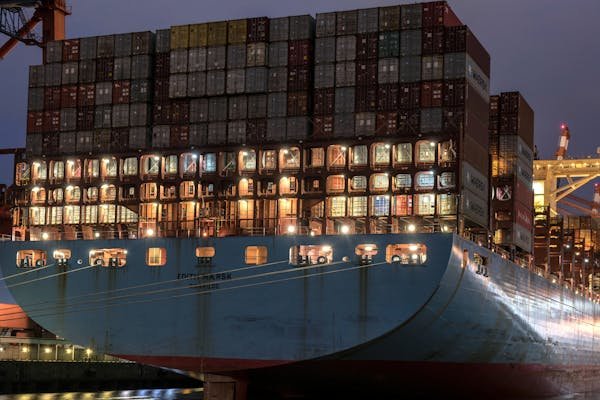
If you’re looking to improve quality and consistency—especially in complex, high-precision industries—nearshoring is worth considering. Quality isn’t just about the product. It’s also about the process. And nearshoring improves both.
25. Logistics costs represent up to 30% of total offshore production costs
When companies calculate manufacturing costs, they often focus on wages and materials. But that’s only half the picture. Logistics—shipping, warehousing, customs, and insurance—can make up to 30% of total offshore production costs.
That’s a huge chunk.
Now, compare that to nearshoring, where goods travel shorter distances, face fewer international borders, and spend less time in transit. Your logistics costs shrink dramatically.
Nearshoring lets you:
- Rely more on trucks and rail (vs. ships and planes)
- Reduce warehousing needs (faster turnover)
- Simplify customs paperwork
- Minimize handling costs
Take a fresh look at your cost structure. Are logistics silently draining your margins? If so, nearshoring could give you the breathing room you need.
26. Nearshoring provides 20–40% improvement in lead time reliability
Lead time reliability is about how consistently you get what you need, when you need it. And nearshoring leads the way here—offering a 20–40% improvement compared to offshoring.
With offshore models, your lead times might look good on paper. But they’re often disrupted by port delays, political unrest, or even typhoons.
Nearshoring provides:
- Predictable schedules
- Simpler transportation routes
- Easier supplier coordination
- Less reliance on transcontinental shipping
If your business suffers from inventory swings, missed production slots, or late deliveries to retailers, this stat should hit home.
Reliable lead times mean fewer stockouts, less emergency shipping, and happier customers. That’s a competitive edge worth investing in.
27. 43% of U.S. nearshoring investment is going to Latin America
Latin America is quickly becoming the go-to region for nearshoring among U.S. firms. Nearly half—43%—of all U.S. nearshoring investment now flows there.
The region offers:
- Geographic proximity
- Competitive wages
- Growing tech and manufacturing infrastructure
- Trade agreements like USMCA and CAFTA
Countries like Mexico, Colombia, and Costa Rica are leading the way. They’re actively courting U.S. firms with incentives, skilled labor pools, and logistics upgrades.
If you’re exploring nearshoring, Latin America deserves a close look. There’s an ecosystem forming. And it’s easier to plug into than ever before.
Attend trade expos. Partner with regional chambers. Or better yet—go visit and see the momentum for yourself.
28. 38% of companies experienced IP theft or compromise while offshoring
This is a serious risk that often goes underreported. More than a third of companies report that they’ve experienced some form of IP theft or compromise while working with offshore vendors.
That could mean copied code, leaked blueprints, or unauthorized product clones. For businesses in innovation-heavy industries, the consequences are devastating.
Nearshoring reduces this risk. You’re working with partners in jurisdictions where you can enforce contracts, file legal actions, and ensure oversight.
It also shortens the supply chain, which limits exposure. Fewer hands touching your IP means fewer chances for it to leak.
If your business is built on innovation, don’t take IP risks lightly. Build partnerships that protect your most valuable assets.
29. 80% of mid-sized firms now include nearshoring in their supply chain diversification plans
Mid-sized companies are the engine of most economies. And 80% of them now say nearshoring is part of their supply chain diversification strategy.
This shows that nearshoring is not just a big business trend. It’s become mainstream.
Mid-sized firms often don’t have the deep cash reserves to weather long disruptions. That makes resilience even more critical. Nearshoring helps them build flexible, reliable networks without overcommitting capital.
For you, this means competition is heating up. Suppliers in nearshore markets will become more selective. So, the earlier you build those relationships, the better positioned you’ll be.
30. 29% of European Union firms plan to shift procurement to within the EU by 2026
Europe is pulling back. Nearly a third of EU companies plan to move sourcing inside the EU by 2026. This isn’t about nationalism—it’s about stability.
Recent events like Brexit, global tensions, and pandemic disruptions have highlighted the vulnerabilities of far-flung supply chains.
By sourcing within the EU, companies gain:
- Regulatory consistency
- Shorter transport times
- Legal protection
- Localized risk management
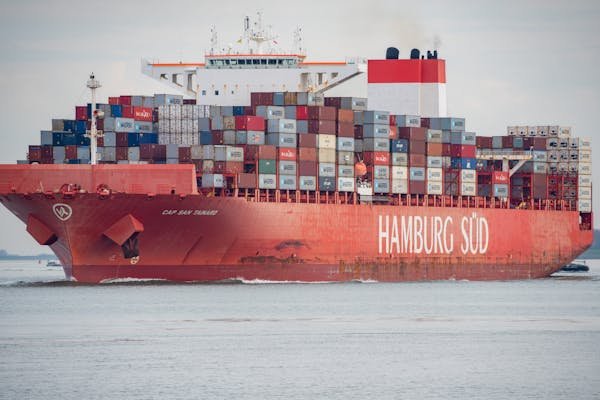
For businesses operating in or with Europe, this trend is worth watching. The internal market is reshaping itself. If you’re part of that ecosystem, aligning your sourcing strategy with EU trends will keep you competitive—and compliant.
Conclusion:
The numbers don’t lie. The global tide is turning toward nearshoring. This isn’t a short-term response to crisis. It’s a long-term strategy shift backed by data, boardroom decisions, and real-world results.
Whether you’re a startup founder, supply chain manager, or Fortune 500 executive, the message is clear: it’s time to take a hard look at where your operations live—and ask whether they belong closer to home.




















